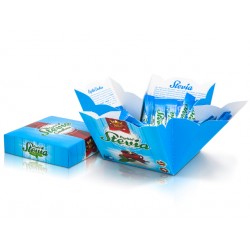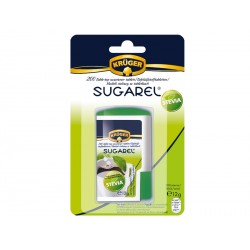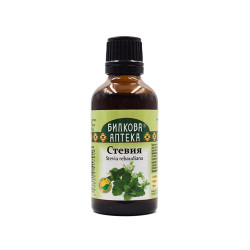Stevia, also called "honey herb", was known to mankind more than 1.5 thousand years ago, but modern humanity is discovering it very soon. Stevia Rebaudiana was "discovered" to the modern world by American explorer Antonio Bertoni in 1905, but then again "forgotten".
In Mayan language, her name sounds "kaa-ehe". In Russian, its Latin term stevia is used. Indians call this herb "ka-he-he", which means sweet grass.
It is a perennial plant with a height of 50 to 70 cm with small smoky petals with very small white flowers. It likes a warm and humid climate, well-enriched soil. One square meter of grass is collected and dried, which can replace 7 kg of sugar. It is enough to put in a cup of tea two or three small petals of this herb and the tea becomes as sweet as if you put two or three sugar cubes.
Stevia is needed by humanity
At present, the Japanese know most about its qualities, which began using it since 1954 as part of a program to save the nation after the 1945 nuclear catastrophe. Since 1960, it has become a major sweetener in all manufactured products in Japan and has since been banned from exporting this herb from Japan.
This herb has a powerful prophylactic value in treating more of the diseases of our time with a pronounced homeopathic course of action. In the US, importers initially did not accept Stevia well. In fact, it is about competing with sugar producers and artificial sweeteners. After much controversy and research, however, stevia has been approved as a dietary supplement, and since 1997 has been designated the sole sweetener on the Pentagon's army menu. Since 1951, this herb has been widely grown in the southern parts of Russia, Moldova, Georgia and most of all in the former Asian republics. This sweet herb primarily contains glycosides, which are involved in the metabolism of the human body without insulin, normalizing blood glucose levels. Sweet grass contains a wide range of essential and useful substances for the human body: cellulose, pectic substances, plant lipids, polysaccharides, vitamins - A, C, B1, B2, micronutrients - potassium, magnesium, zinc, selenium, iron, calcium, sodium, antioxidants , amino acids, menearin compounds and the like. It creates the comfortable feeling of sweetness that is required for all the metabolic processes in our body.
Healing properties
It is primarily used to treat diabetes. Also in oncology, in the case of a collapse of the immune system, in stress, disorders of the circulatory system, hypertension, gastrointestinal diseases, such as a tonic that stimulates mental and physical activity, such as antiseptic and anti-inflammatory agent, and naturally - in excess weight. Sweet grass can be used as a dried herb, as an aqueous, alcohol and oil extract. It is used as a sweetener in the production of all kinds of products that need a sweet ingredient. This herb has been proven to be absolutely harmless unlike other sweeteners currently available. Currently, sweet herbs worldwide are considered to be one of the most important herbs, which is on the list of useful herbs in one of the first places next to such plants as ginseng, eleutherococcus and radiola. All these plants are adaptogens, the value of which is that they help to improve metabolic processes at the cellular level.
Regular use of Stevia normalizes blood sugar. It is the "wellspring of life" for patients with diabetes mellitus. It has a positive effect on fat metabolism, strengthens the cardiovascular system, lowers blood cholesterol levels, promotes the elimination of toxins and slag in the body.
In the pharmaceutical industry, stevia is used to prepare drugs that help with substance abuse (alcoholism and drug addiction).
Stevia is especially helpful in recovering people affected by emergencies - accidents and catastrophes - to increase immunity.







